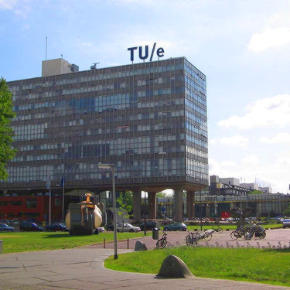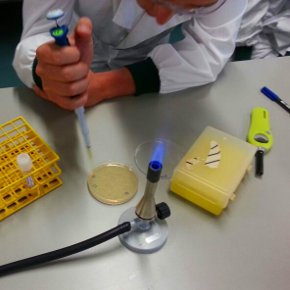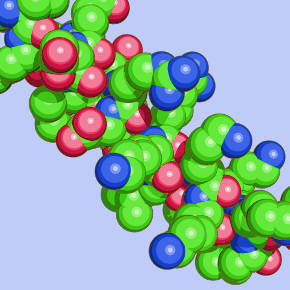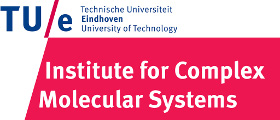Team:TU-Eindhoven
From 2013.igem.org
Pascalaldo (Talk | contribs) |
(→Project Description) |
||
| Line 7: | Line 7: | ||
==Project Description== | ==Project Description== | ||
| - | Within our project we aim to focus on a relatively new form of {{:Team:TU-Eindhoven/Template:Tooltip | text=MRI | tooltip=Magnetic Resonance Imaging }}: {{:Team:TU-Eindhoven/Template:Tooltip | text=CEST | tooltip=Chemical Exchange Saturation Transfer }} imaging. | + | Within our project we aim to focus on a relatively new form of {{:Team:TU-Eindhoven/Template:Tooltip | text=MRI | tooltip=Magnetic Resonance Imaging }}: {{:Team:TU-Eindhoven/Template:Tooltip | text=CEST | tooltip=Chemical Exchange Saturation Transfer }} imaging. CEST imaging proteins contain hydrogen atoms which can be used to create the same image quality as when conventional heavy metals are used. |
| - | We attempt to use E. coli K-12 strains to produce these proteins once the bacteria enters the body, allowing the E. coli to be our delivery system and production factory. Unique to our process is the injection of the protein producing bacteria into the patient, as well as the | + | We will attempt to use E. coli K-12 strains to produce these proteins once the bacteria enters the body, allowing the E. coli to be our delivery system and production factory. Unique to our process is the injection of the protein producing bacteria into the patient, as well as the tumour targeting element of the bacteria. Tumours present a {{:Team:TU-Eindhoven/Template:Tooltip | text=hypoxic | tooltip=Low oxygen saturation }} environment, an attribute which allows them to be targeted by our bacteria. Furthermore, these hypoxic conditions will be the trigger for the production of our CEST proteins. This will ensure that MRI contrast is created where tumours are present, and also provides a good means of tumour targeting for drug delivery systems in the future. Once the CEST MRI images have been taken, the bacteria will be killed and eliminated from the body using our killing mechanism. |
| - | In order to achieve the production of our bacteria based CEST MRI contrast agent, we must | + | In order to achieve the production of our bacteria based CEST MRI contrast agent, we must create a series of diverse models focusing on the different components of the MRI contrast agent production. These models will range from the selection of the most adequate proteins for CEST MRI to the behaviour of the FNR promotor and the bacterial killing mechanism. |
| + | |||
| + | In the lab an attempt will be made to produce the CEST MRI proteins, both aerobically as well as anaerobically. To Enable the anaerobic expression specialized promotors will be designed which will react to the changes in oxygen saturation and ultimately trigger the protein expression. Should protein expression be successful either aerobically or anaerobically then these proteins can be tested for the quality of their contrast in an MRI machine. | ||
{{:Team:TU-Eindhoven/Template:Quote | text=We will attempt to create bacteria that can visualize tumors<br />on a MRI scan, without the use of heavy metals. | by=Mission Statement of the TU/e iGEM 2013 Team | position=right }} | {{:Team:TU-Eindhoven/Template:Quote | text=We will attempt to create bacteria that can visualize tumors<br />on a MRI scan, without the use of heavy metals. | by=Mission Statement of the TU/e iGEM 2013 Team | position=right }} | ||
Revision as of 20:55, 7 August 2013



Welcome to the homepage of the 2013 iGEM team of the Eindhoven University of Technology.
Project Description
Within our project we aim to focus on a relatively new form of MRI: CEST imaging. CEST imaging proteins contain hydrogen atoms which can be used to create the same image quality as when conventional heavy metals are used.
We will attempt to use E. coli K-12 strains to produce these proteins once the bacteria enters the body, allowing the E. coli to be our delivery system and production factory. Unique to our process is the injection of the protein producing bacteria into the patient, as well as the tumour targeting element of the bacteria. Tumours present a hypoxic environment, an attribute which allows them to be targeted by our bacteria. Furthermore, these hypoxic conditions will be the trigger for the production of our CEST proteins. This will ensure that MRI contrast is created where tumours are present, and also provides a good means of tumour targeting for drug delivery systems in the future. Once the CEST MRI images have been taken, the bacteria will be killed and eliminated from the body using our killing mechanism.
In order to achieve the production of our bacteria based CEST MRI contrast agent, we must create a series of diverse models focusing on the different components of the MRI contrast agent production. These models will range from the selection of the most adequate proteins for CEST MRI to the behaviour of the FNR promotor and the bacterial killing mechanism.
In the lab an attempt will be made to produce the CEST MRI proteins, both aerobically as well as anaerobically. To Enable the anaerobic expression specialized promotors will be designed which will react to the changes in oxygen saturation and ultimately trigger the protein expression. Should protein expression be successful either aerobically or anaerobically then these proteins can be tested for the quality of their contrast in an MRI machine.
We will attempt to create bacteria that can visualize tumors
Mission Statement of the TU/e iGEM 2013 Team
on a MRI scan, without the use of heavy metals.

About Us
We are the 2013 iGEM team from Eindhoven, the Netherlands.
Learn more...
Wetlab
Take a look at the results of the broad range of experiments performed this year.
Learn more...
Drylab
Various simulations were carried out to support the wetlab experiments.
Learn more...
 "
"



